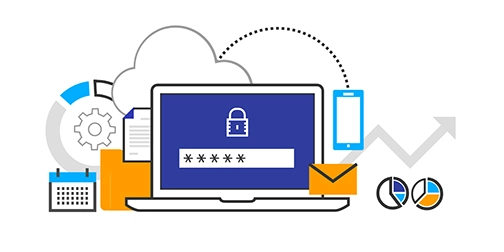What Is A Document Repository? Benefits, Set Up Tips And Best Practices
1. Effective document management through a digital repository
Maintaining organized and secure business documents can be challenging without a centralized digital repository that acts as the single source of truth. In this post, we'll explore what a document repository is, why it's essential for your business, and how it can improve your document management processes.
2. What is a document repository?
A document repository is a shared digital space where authorized employees can quickly retrieve documents and data. It stores a wide range of formats, including Microsoft Word files, spreadsheets, photos, and architectural drawings, all in one centralized location.
With a well-organized digital repository, employees can instantly find the documents they need by searching keywords, metadata, or full-text, or by navigating a structured folder system. In addition to making documents easy to find, a repository also offers robust backup capabilities and frees up physical space previously used for paper file storage.
Permissions based on individual roles, statuses, and departments ensure that only the appropriate team members can view, edit, or delete documents. This safeguards sensitive information from unauthorized access, reducing the risk of data breaches, intellectual property theft, and non-compliance with data privacy regulations.

3. Document repository vs. Document management system
A document repository is a critical component of a Document Management System (DMS), not a separate solution. A well-organized repository serves as the foundation that enables your company to maximize the benefits of your DMS.
4. Uses of a document repository
A document repository is designed to store and organize all types of documents, emails, photos, CAD drawings, and related information produced or received by your company. By eliminating the need to sift through paper files, it allows employees to retrieve information quickly and efficiently. This centralized resource avoids the confusion and inefficiency of multiple copies filed differently across various departments.
5. Benefits of a document repository
- Organized Documents and Data: Structuring your document repository with attention to detail is key. Indexing documents using predefined categories and metadata makes retrieval simple and efficient. Tools powered by machine learning can further enhance this process by recognizing document formats and automating capture over time.
- Security of Confidential Information: Document repositories offer automated backups, encryption, secure file transfer, version control, and audit trails. User permissions add an extra layer of security, ensuring that only authorized individuals can access sensitive data. This shift to digital storage also protects documents from physical damage or loss.
- Better Management of the Document Lifecycle: Metadata can be used to automate tasks such as enforcing document retention schedules and notifying users of important dates like contract renewals.
- Version Control: Version control features ensure that users are always working with the latest version of a document. This prevents errors and ensures that document integrity is maintained.
- Enhanced Collaboration: A centralized repository allows multiple users to collaborate on documents, providing feedback in one place and streamlining project workflows. This is especially beneficial for hybrid and remote work environments, as employees can access documents from anywhere.
- Streamlined Business Processes: Your document repository forms the basis for process automation, enhancing productivity and reducing errors through automated workflows.
- Scalability: Cloud-based repositories allow your company to expand as needed, adding advanced features and additional licenses as your business grows.

6. Setting up a document repository
Setting up a document repository involves several key steps:
- Gather Documents: Collect all paper and digital documents for import into the repository.
- Scan Paper Documents: Convert paper documents into digital formats using high-quality scanning equipment.
- Create a Folder Structure: Organize your files within a well-structured folder system that’s easy to navigate.
- Develop a Naming Convention: Establish consistent naming conventions and indexing practices across departments.
- Apply Organizational Principles to Paper Documents: If retaining paper copies, use the same organizational structure for consistency.
- Roll Out the Repository as Part of Your DMS: Deploy the repository alongside your DMS and gather feedback from users to make necessary adjustments.
- Train Your Team: Provide training on the repository’s structure, naming conventions, and overall use.
7. Best practices for building a document repository
- Set Strict User Permissions: Protect sensitive information by controlling access.
- Leverage Automated Workflows: Utilize your DMS’s digital workflows to enhance efficiency.
- Maintain Audit Trails: Keep detailed records of document activity to ensure accountability.
- Invest in Training: Ensure all employees understand how to use the repository effectively.
- Choose the Right Software: Select a user-friendly DMS that integrates well with your existing systems and meets your company’s needs.
Conclusion
A well-organized document repository is the cornerstone of effective document management. It enhances collaboration, eliminates redundancy, and ensures fast retrieval of accurate information. Careful planning and implementation unlock greater productivity, security, and compliance, driving your business success in the digital age.
How DocuWare Supports Document Repositories

DocuWare significantly enhances the management and efficiency of document repositories, serving as a centralized hub for all your organization's digital files. With DocuWare, businesses can securely store, organize, and retrieve documents of various formats, from Word files and spreadsheets to CAD drawings and emails, all within a single, unified platform.
DocuWare’s advanced indexing and search capabilities ensure that employees can quickly find the documents they need using keywords, metadata, or full-text searches. This eliminates the inefficiencies of manual filing systems and reduces the time spent searching for information. The platform also supports the creation of a well-structured folder system, making navigation intuitive and retrieval fast and easy.
In addition to organization, DocuWare provides robust security features that protect sensitive information. User permissions can be set based on roles, departments, or individual statuses, ensuring that only authorized personnel can view, edit, or delete documents. This level of control is crucial for maintaining compliance with data privacy regulations and safeguarding intellectual property.
DocuWare also enhances the collaboration process by allowing multiple users to access and work on documents simultaneously, whether they are in the office or working remotely. This centralized access, combined with version control features, ensures that everyone is working with the most up-to-date information, further reducing errors and enhancing team efficiency.
By integrating DocuWare into your document repository strategy, your organization can not only improve document management and security but also boost overall productivity, streamline business processes, and ensure that critical information is always at your fingertips.
News & Events
Keep up to date
- 18Dec
Ricoh recognised as a Top 5 global AV Integrator in SCN Top 50 Systems Integrators 2025
- 11Dec
Ricoh Recognised as a Sustainability Leader in Quocirca's 2025 Report
- 07Nov
Ricoh Pro C7500 Gold Toner Brings Sustainable Luxury to Sun PhuQuoc Airways’ Travel Guide
- 31Oct
Ricoh perovskite solar cells installed on Japan Aerospace Exploration Agency cargo transfer spacecraft1 HTV-X1
